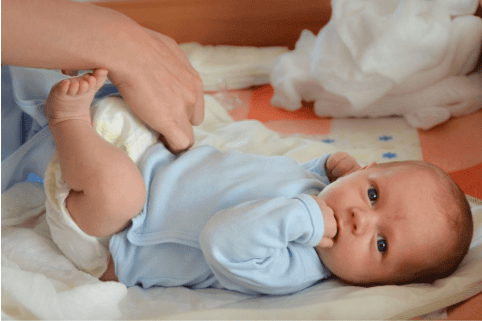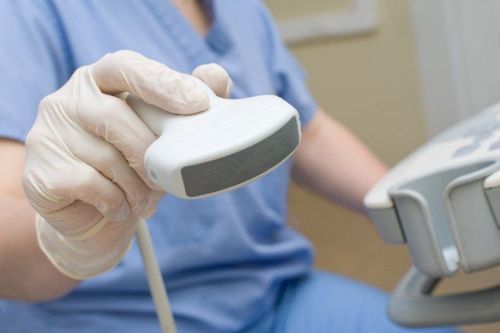This is an automatically translated article.
This article is professionally consulted by Resident Doctor of Pediatrics - Neonatology - Department of Pediatrics - Neonatology - Vinmec Hai Phong International General Hospital.
Congenital hip dislocation is a rare disease (1/800-1000 children), but if not detected early by parents, it will lead to long-term consequences for the baby such as abnormal gait, scoliosis. , pelvic deformity affects later reproduction in girls.
1. Causes of congenital hip dislocation
Congenital hip dislocation in children is a phenomenon where the femoral head of one or both sides of the hip is dislocated from the original position of the hip joint.
The cause of congenital hip dislocation in children has not been elucidated so far, usually occurs in premature babies, breech babies and preterm births.
In addition, the risk of congenital hip dislocation may be due to:
Birth trauma; Abnormal position of the fetus in the uterus; Maternal infection during pregnancy; Loose joints due to decrease in maternal hormones during pregnancy; Primary dysplasia of the acetabulum; Chromosomal mutations: children with congenital multi-joint stiffness (club feet, knee stiffness, elbow stiffness, shoulder stiffness, hip dislocation...); Genetic factors, for families with people who have had this defect, the risk of children having congenital hip dislocation is often higher.

2. Signs of congenital hip dislocation
Signs of congenital hip dislocation can be detected immediately after birth or a few weeks after birth.
There are 8 signs to help detect early after birth:
Length difference between the legs: The hip dislocated leg is shorter than the opposite side. But if the hip dislocation on both sides, it will be difficult to detect; Wrinkles in the buttocks and thighs of the dislocated leg are less and higher than on the healthy side; The foot falls out when the child is lying with the legs stretched out; In the knee flexion position, the dislocated knee joint is lower than the normal side; Limited flexion and flexion of the hip on the dislocated side; Limping gait if bilateral hip dislocation; When the hip is flexed and closed, the femoral head slides out of the joint, creating a "click" sound (in children under 6 months of age); When the hip is flexed and extended, the femoral head slips out of the socket, causing a “clump” sound (in infants under 6 months of age). In addition, hip angiography or ultrasound can clearly show dislocations in infants or older children.

3. Treatment of congenital hip dislocation
The best treatment for congenital hip dislocation is early intervention right after birth. If this deformity is discovered soon after birth, treatment is simply maintaining the hip flexion and flexed knee, for about 2 months. This position can be maintained by methods such as:
Perform sanitary diapering, use thick folded diapers to keep the hip joint open. Carry or carry a baby. Place the baby on his or her stomach while sleeping. For children with this defect from 1 to 6 months old, the treatment is also done in the same way and usually after 3 to 4 weeks, the hip joint will return to its normal position. This technique allows success in 90-95% of cases.
In case a comprehensive intervention is required, it is possible to cast a cast, perform mobility exercises, use orthopedic braces. When conservative treatment is not effective, early orthopedic surgery is required.
Orthopedic brace: Hip splint made of soft foam to treat one or two hip dislocations. Time to wear the brace: Right after birth until the child is 12 months old. Continue to wear it day and night for the first 6 months. Wear the splint at night for the next 6 months. Orthopedic cast: Orthopedic cast is indicated for children with congenital hip dislocation under 6 months of age. Casting time is about 2 weeks / batch, done about 10-15 times. Orthopedic surgery: If from birth to 18 months, the child has congenital hip dislocation without any intervention, the indication for treatment is orthopedic surgery. Early orthopedic surgery if conservative treatment does not work, helps children improve their gait later.

Congenital hip dislocation in older children, surgical treatment is very difficult with many different techniques: acetabular reconstruction, fixation of the cervical axis - femoral head... However, the results are still very limited. Therefore, early detection of congenital hip dislocation is essential, making it easy for treatment to achieve good results. You should take your child to a reputable hospital with a team of qualified doctors and modern equipment to achieve the best treatment effect.
Vinmec International General Hospital is a high-quality medical facility in Vietnam with a team of highly qualified medical professionals, well-trained, domestic and foreign, and experienced.
A system of modern and advanced medical equipment, possessing many of the best machines in the world, helping to detect many difficult and dangerous diseases in a short time, supporting the diagnosis and treatment of doctors the most effective. The hospital space is designed according to 5-star hotel standards, giving patients comfort, friendliness and peace of mind.
>> See more: Ultrasound diagnosis of congenital hip dislocation - Post by Master, Doctor Lam Thi Kim Chi - Doctor of Radiology - Department of Diagnostic Imaging - Vinmec Da International General Hospital Nang
Please dial HOTLINE for more information or register for an appointment HERE. Download MyVinmec app to make appointments faster and to manage your bookings easily.







